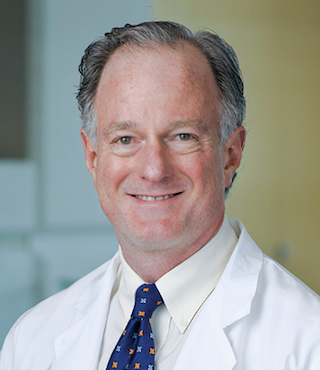Comprehensive Heart and Vascular Center
Medical Misinformation: Challenges in Clinical Practice
By Joseph A. Hill, M.D., Ph.D., Chief of Cardiology

The world is witnessing a resurgence of previously controlled diseases. Some patients reject medical advice for statin therapy in the face of compelling science. In both instances, human lives are at risk; and in the former case, parents who withhold vaccination from a child put others at risk – not themselves – viz. their child and their child’s contacts.
As care providers, we are charged with diagnosing disease (or disease risk) and proposing interventions based on scientific evidence. In so doing, we hope to convince our patients to follow our science-grounded advice. However, in the instances cited above, we are failing to influence – persuade – our patients. Rather, other voices are more successful than we are. These voices emerge from celebrities, politicians, and even individuals trained in science and medicine, often with misguided or venal motives.
How can we do a better job of influencing the decisions of our patients? In my presentation at AHA, I turned to Aristotle’s Rhetoric, a foundational work published more than two millennia ago. Aristotle argued that there are three essential elements required for success in persuasion: logos, ethos, and pathos. Logos is the strength and merit of the argument. Ethos is the credibility and believability of the speaker. Pathos is understanding the listener’s viewpoints, preconceptions, hopes, and worries.
"The recently coined term ‘firehosing’ – rapid-fire lies intended to diminish the value of truth – is an emerging strategy of misinformation. Nevertheless, we must recognize that we, as physicians, have some ownership of the problem of medical misinformation, and we can work to do something about it.”
Joseph A. Hill, M.D., Ph.D.

Many of us think that logos is sufficient, that making a strong case should be enough. Again, Aristotle taught us that this is, in fact, not the case; logos is necessary but not sufficient. We must devote attention to the other pivotal components of influence.
The ethos of our profession has been diminished by many events over the years. To cite a few, Andrew Wakefield’s shameful promulgation of his long-since debunked arguments that purportedly linked MMR vaccination with autism has done great harm to individuals and to the credibility of medicine. The Tuskegee Study is another dark stain on our profession. Robust profits in the pharmaceutical industry driven by taxpayer-funded discoveries in academia contribute to the decline in our profession’s ethos. Physicians with strong financial ties to industry, coupled with some whose practice patterns are driven by financial considerations, only lessen our credibility yet further.
Sadly, many of us do not pay enough attention to our patients’ perspectives, education, preconceptions, and fears. Often, it’s difficult to find time in a busy clinical day to focus on pathos. That these conversations typically occur in the context of a patient’s understandable worry and concern for his/her health, coupled with a hierarchical dynamic between doctor and patient, sets the stage for failure.
The plague of medical misinformation is unquestionably multifactorial. The recently coined term “firehosing” – rapid-fire lies intended to diminish the value of truth – is an emerging strategy of misinformation. Nevertheless, we must recognize that we, as physicians, have some ownership of the problem of medical misinformation, and we can work to do something about it. We must seize every opportunity to address this expanding problem daily in our interactions with patients.
Follow Dr. Hill on Twitter @josephahill
Read more articles from our Physician Update AHA Edition.

